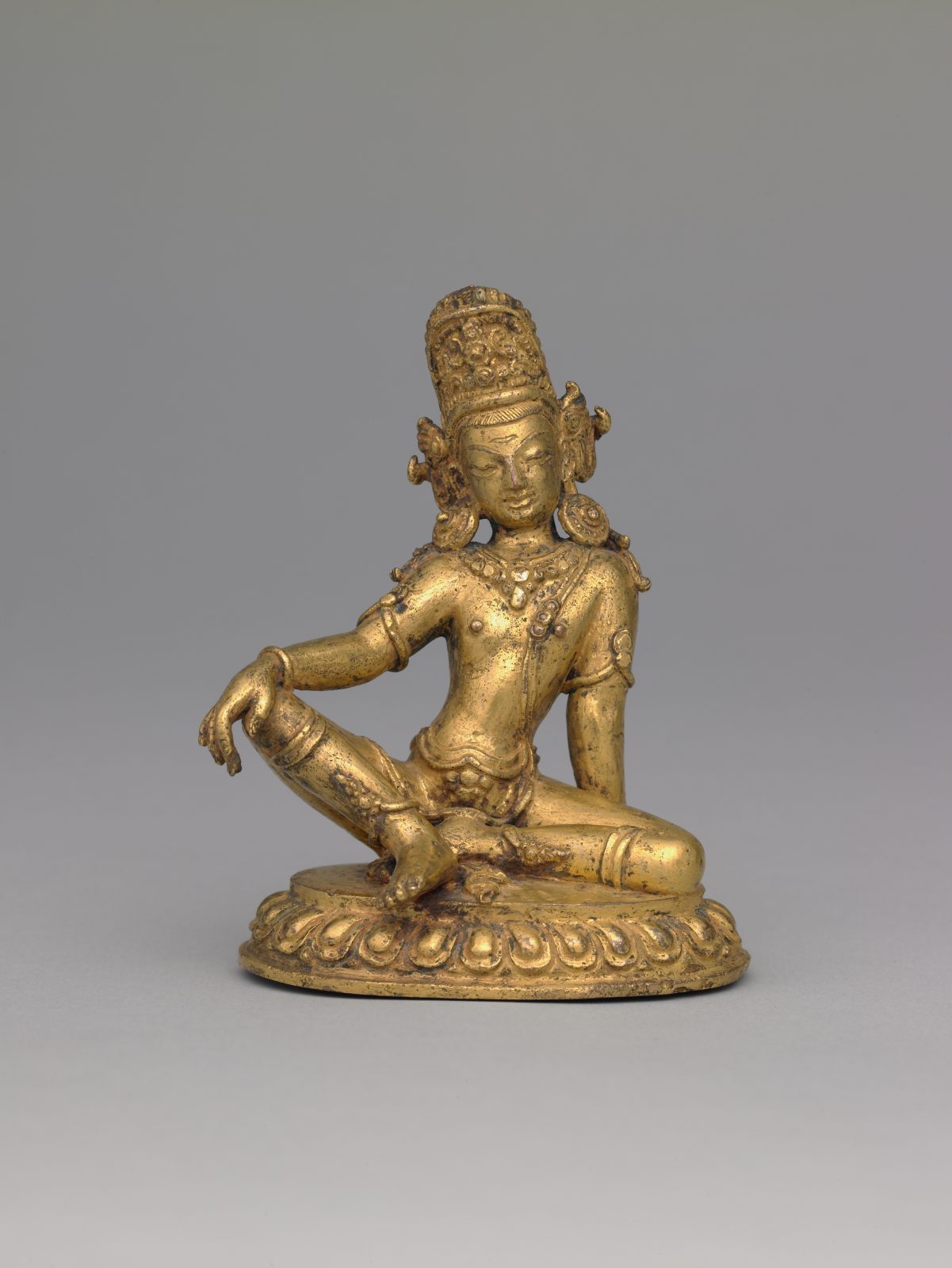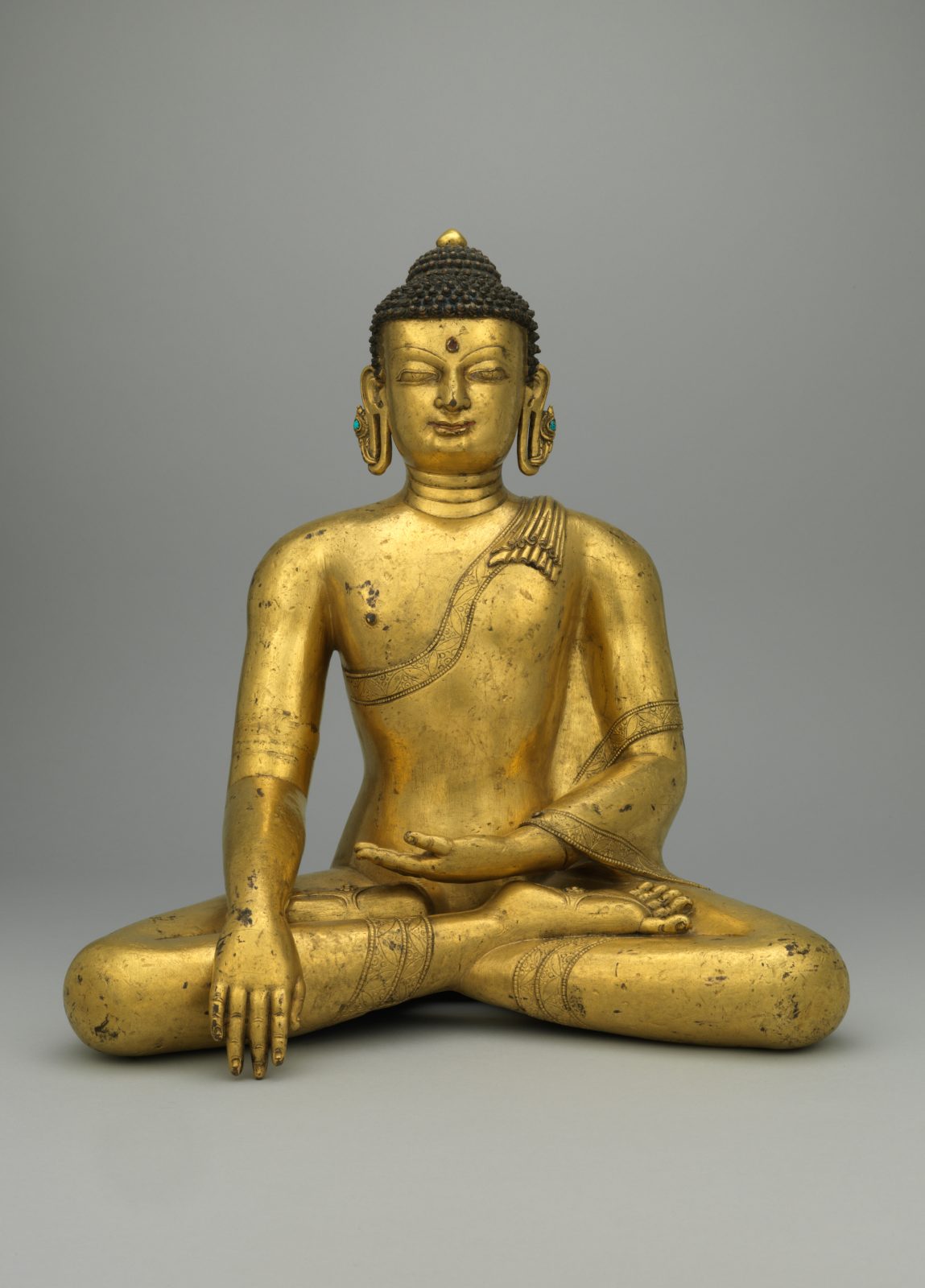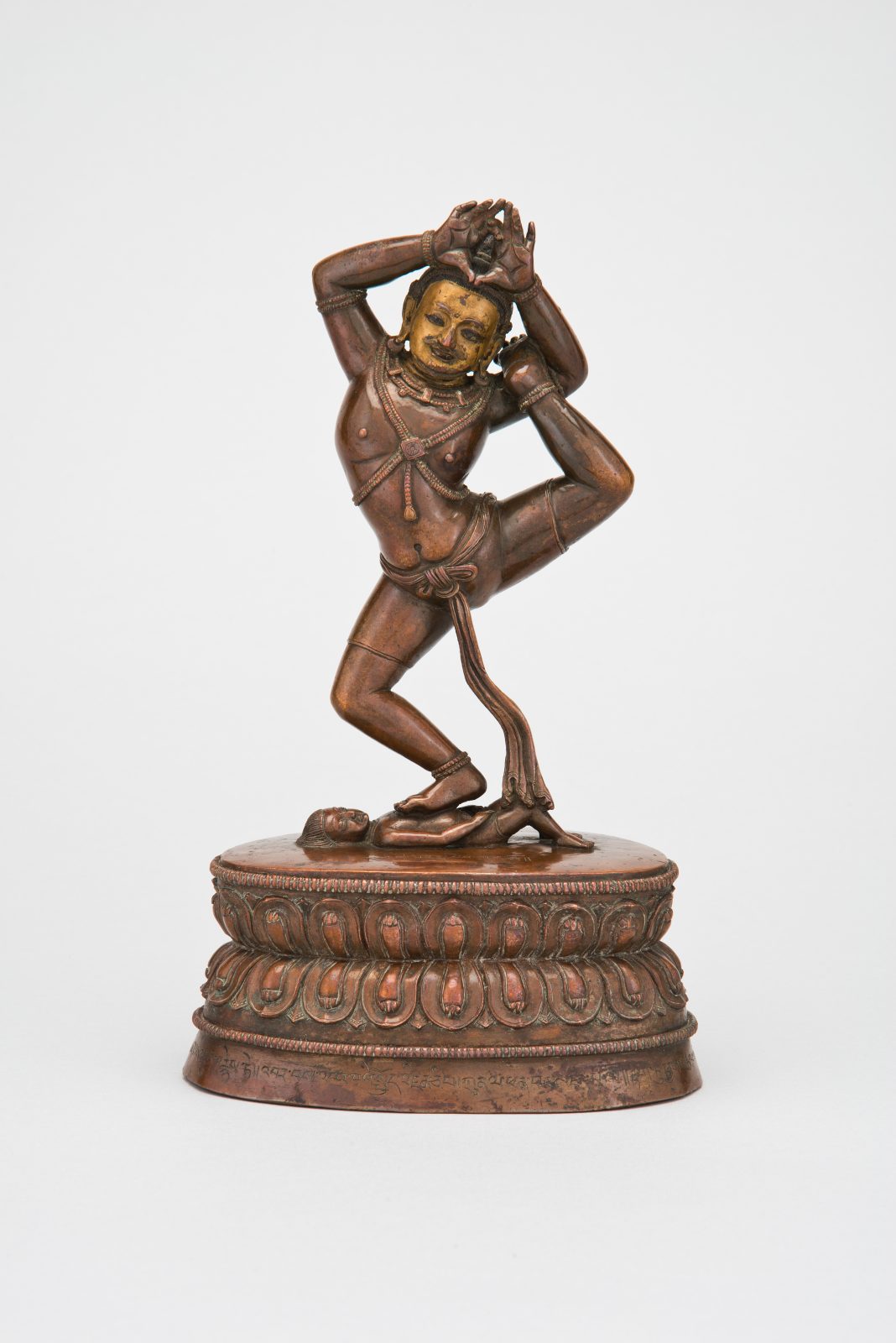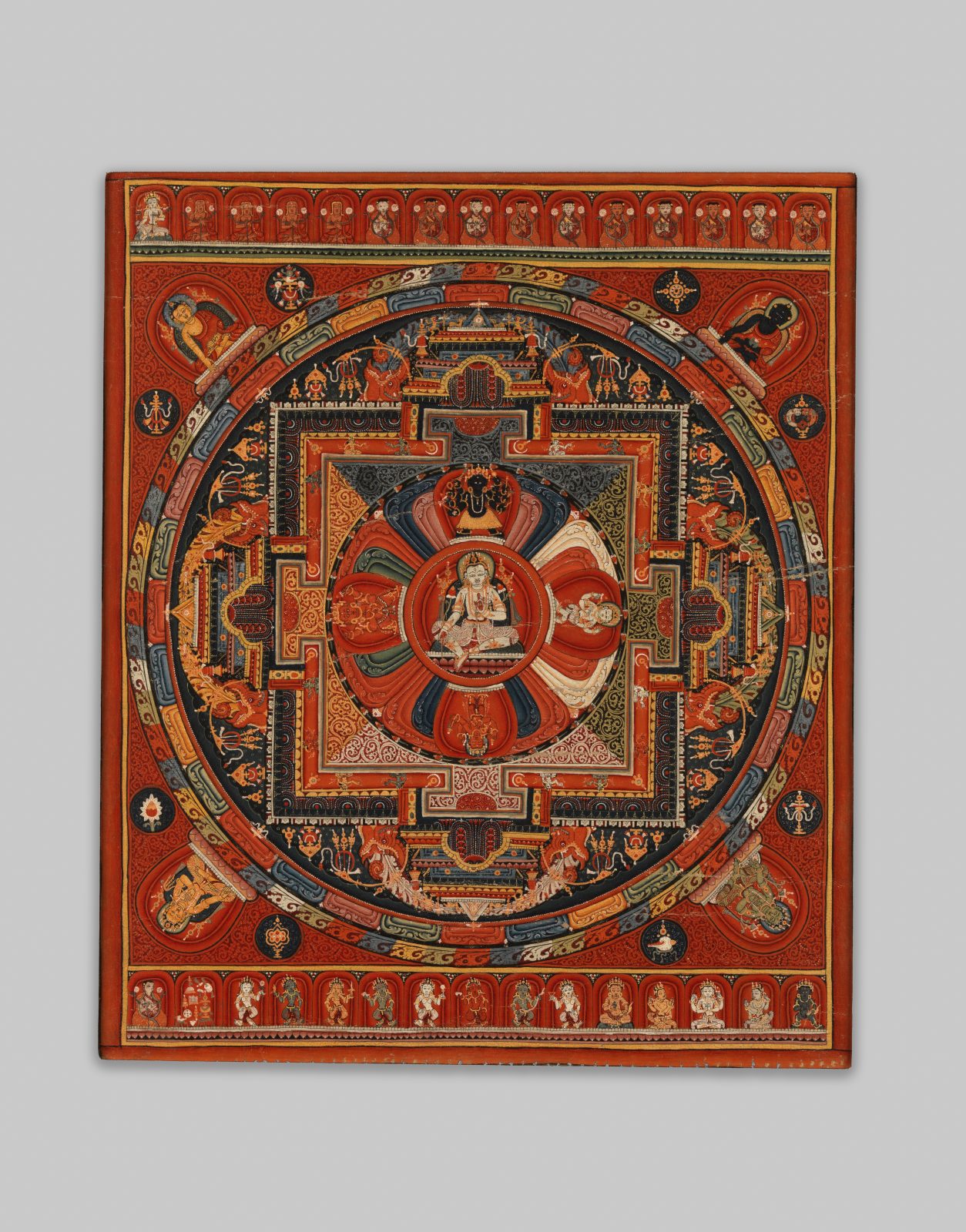While yoga’s popularity in the United States has grown exponentially over the past few decades, it’s hardly a new phenomenon. The roots of yoga extend far back into ancient Indian history as a varied spiritual tradition with some practices you won’t be able to learn at your local studio. Explore the development of yoga through some of our favorite objects from the Rubin Museum’s collection.
The use of the word “yoga” can be traced back to the Rig Veda, a collection of ritual hymns used to maintain order in the universe. This sculpture depicts Indra, king of the gods according to the Rig Veda. The Rig Veda is considered the earliest text of what became the Hindu tradition. In the hymns, yoga often refers to yoking, as in yoking two horses together. It also refers to yoking the physical self with the spiritual world, laying the groundwork for the development of a whole host of spiritual practices that are all part of the yogic tradition.
While yoga is most associated with Hinduism, all spiritual traditions in India have their own types of yoga, including Buddhism. According to the life story of the Buddha, while seeking enlightenment he met with every spiritual teacher he could find, sampling all of the yogic traditions within India at the time. After spending time practicing extreme ascetic yoga, he concluded that he was no closer to enlightenment. Rejecting the extreme asceticism, he embraced an approach that was a “middle way” between the extremes of indulgence and complete renunciation. He ate some food, found a comfortable seat under a tree, and soon became enlightened. This story demonstrates how the religious dialogue between Hinduism and Buddhism fueled developments in yogic traditions.
Another example of how Buddhism and Hinduism intertwined is often found with various yogic figures, with both traditions often claiming the same person as their own. Jalandhara is one of these yogis. You may be familiar with his name if you’ve ever performed the pose Jalandhara bandha (locking your chin to your chest) in yoga class. While the Hindu tradition considers him to be a form of Shiva, the Buddhist traditions revere him as a mahasiddha, one of the great Buddhist tantric masters from India’s medieval period (7th–13th century).
One of the major yogic developments during the medieval period of Indian history is tantra. Not for the faint of heart, what’s unique about tantric yoga is that it promises a quick method to achieving enlightenment. Through extensive rituals and intense visualization practices, the yogin transforms their physical aspect into that of an enlightened being. One tantric method involves using a mandala like the one above to help visualize oneself as a deity. Though tantra’s appeal lies in its expediency, it must be practiced under the guidance of a master to ensure the student won’t fall into the trappings of this intense practice.



